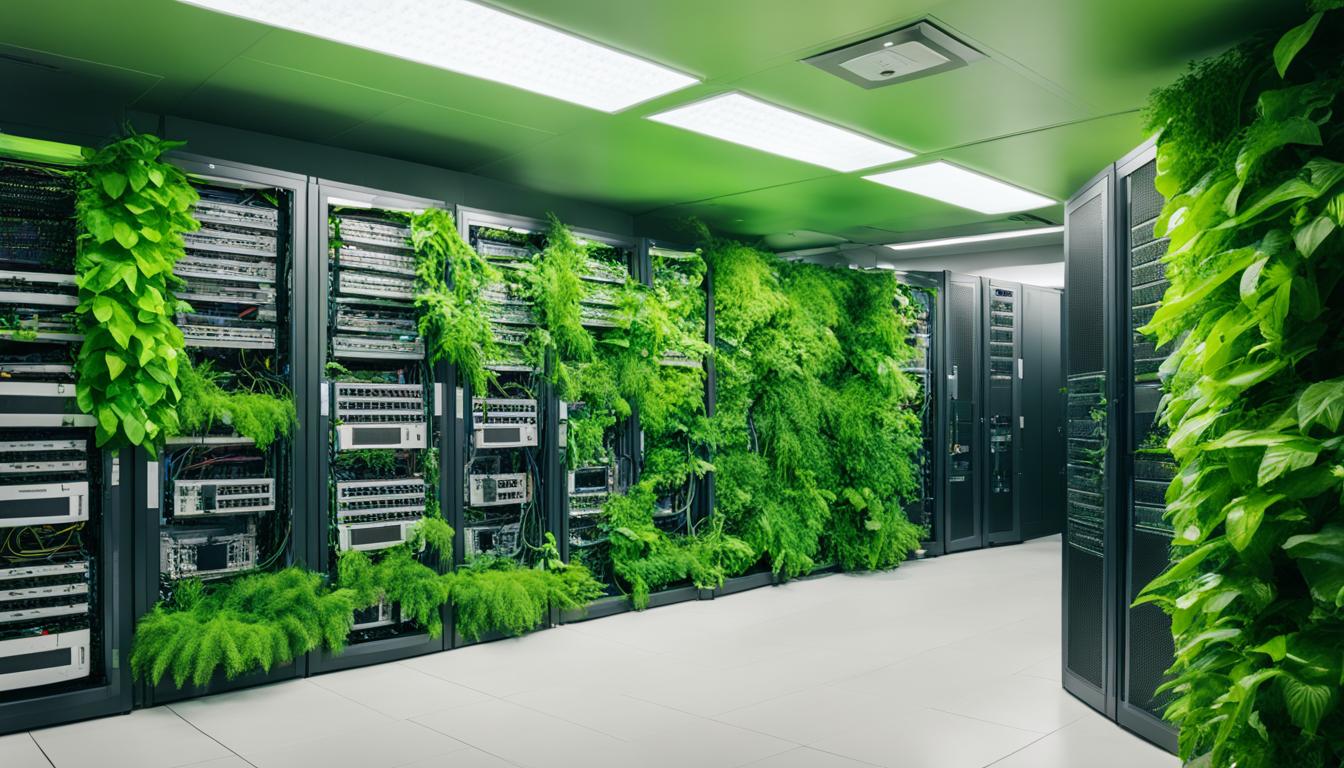Did you know that data centers consume about 2% of the country’s total electricity use and contribute to greenhouse gas emissions? With the increasing reliance on technology and the growing demand for data storage and processing, it’s crucial to address the environmental impact of these operations. Implementing green computing practices in IT can not only help mitigate the environmental effects but also pave the way for sustainable IT practices and eco-friendly technology.
Key Takeaways:
- Promoting green computing in IT is essential for reducing the environmental impact of data centers.
- Implementing green computing practices can lead to cost savings and increased energy efficiency.
- Tracking baseline energy usage and right-sizing servers are crucial steps towards implementing sustainable IT practices.
- Modifying temperature settings and rearranging data centers can optimize energy consumption.
- Replacing older assets with more efficient ones and investing in smart facilities management tools can further enhance sustainability.
Track your base energy usage
To optimize energy efficiency in your data center, it’s essential to understand your baseline energy usage. By tracking and analyzing your electricity consumption, you can identify areas where improvements can be made. Here are the steps you can take to track your base energy usage:
1. Overall Electricity Usage
Start by monitoring your data center’s overall electricity usage. This includes all the equipment, systems, and operations that contribute to energy consumption. By gathering this data, you can establish a baseline to measure future improvements.
2. Categorize Consumption
Break down your energy usage into different categories to get a detailed understanding of where the majority of power is being consumed. Consider categorizing consumption into areas such as:
- HVAC (Heating, Ventilation, and Air Conditioning)
- Servers
- Infrastructure
- Network
- Storage
Dividing energy usage into these categories will help you identify specific areas for energy efficiency improvements.
3. Forecast Future Energy Use
By tracking your baseline energy usage, you can make more accurate predictions about future energy needs. This data will allow you to anticipate energy demands and implement strategies to optimize energy efficiency accordingly.
4. Implement Power Management Practices
Better power management practices can significantly reduce energy consumption in your data center. Consider implementing techniques such as:
- Powering off unused equipment
- Using power management features
- Consolidating workloads and servers
By effectively managing power usage, you can minimize energy waste and improve overall efficiency.
5. Explore Energy Efficiency Technologies
Investigate technologies and solutions that can help optimize energy efficiency in your data center. These may include:
- Virtualization
- Energy-efficient hardware
- Smart cooling and HVAC systems
Adopting these technologies can have a significant impact on reducing your energy consumption and improving overall sustainability.
Tracking your baseline energy usage is the first step towards implementing energy-efficient strategies in your data center. By establishing a thorough understanding of your energy consumption patterns, you can identify opportunities for improvement and make informed decisions to optimize power management.
| Category | Percentage of Energy Usage |
|---|---|
| HVAC | 30% |
| Servers | 40% |
| Infrastructure | 15% |
| Network | 10% |
| Storage | 5% |
Right-size your servers
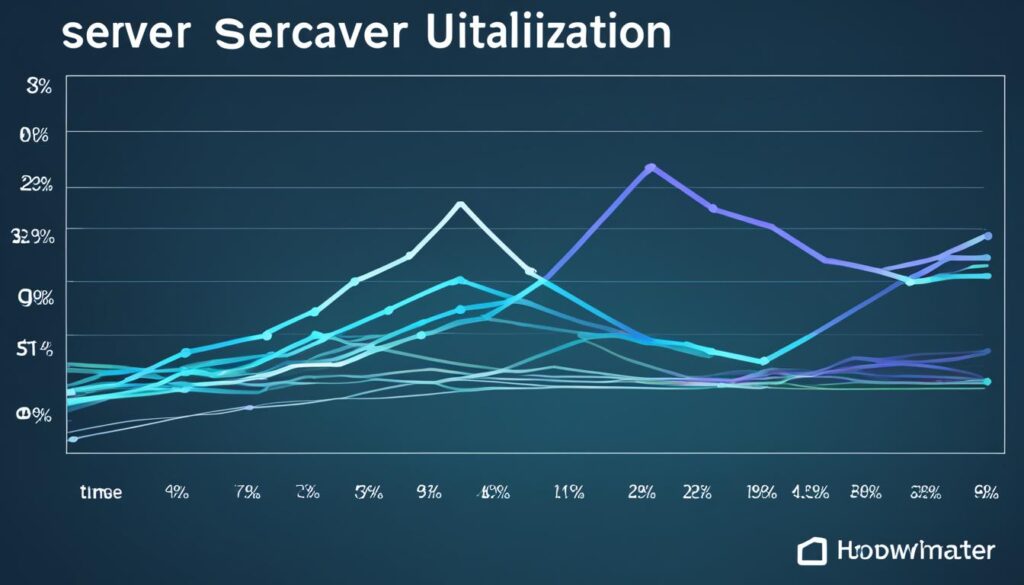
Running servers 24/7 can lead to underutilization and higher energy consumption. To optimize server performance and energy efficiency, it’s essential to assess your servers’ utilization rates and identify functions that can be consolidated onto fewer machines.
One effective solution is through virtualization technology, which allows you to create multiple virtual servers on a single physical machine. This not only reduces the overall physical footprint of your data center but also decreases energy consumption. By virtualizing servers and decommissioning unnecessary ones, you can maximize server utilization and minimize energy waste.
Here are some steps to consider for right-sizing your servers:
- Conduct a server utilization assessment to identify low-utilization servers.
- Determine which functions or applications can be consolidated onto fewer machines.
- Implement virtualization technology to create virtual servers on a single physical machine.
- Consider decommissioning unnecessary physical servers to further optimize energy efficiency.
By right-sizing your servers, you can significantly improve server utilization, reduce energy consumption, and ultimately lower operating costs.
Maximizing Server Utilization
“Virtualization technology allows for the creation of multiple virtual servers on a single physical machine, reducing the overall physical footprint and energy consumption.”
Modify the temperature
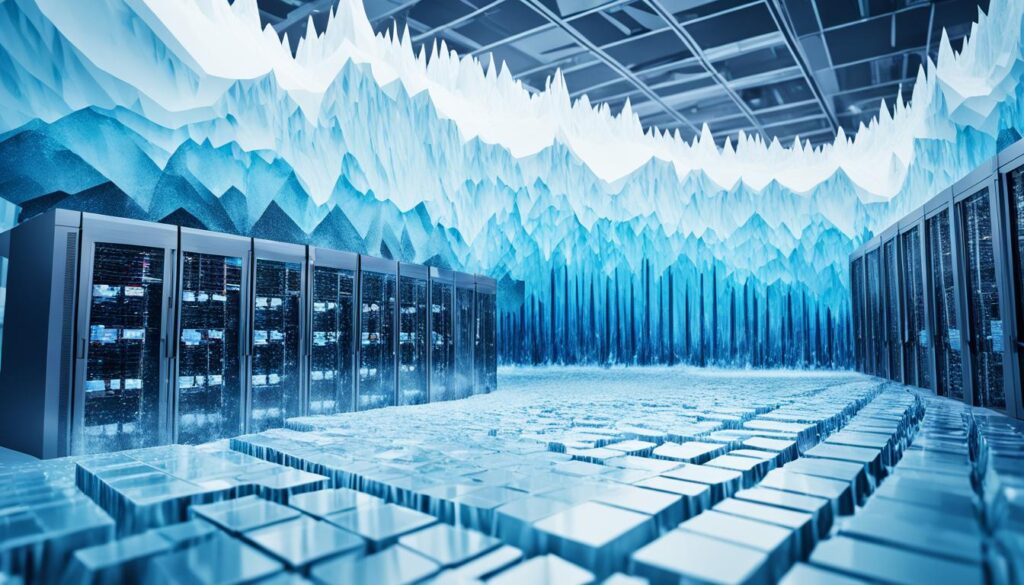
Traditional data center HVAC systems are designed for excessive air conditioning, but newer technologies can operate at higher temperatures without compromising equipment integrity. By adjusting the temperature settings and optimizing cooling systems, you can reduce the HVAC load and energy consumption. Pay attention to proper calculation and monitoring of cooling needs to avoid overheating. Implementing smart layouts, such as hot and cold aisle configurations, can further improve efficiency by grouping assets with similar temperature requirements.
Optimizing Temperature and Cooling Systems
One of the most effective ways to improve energy efficiency in a data center is to modify the temperature settings and optimize cooling systems. Traditional data center HVAC (Heating, Ventilation, and Air Conditioning) systems are designed to maintain low temperatures, often using excessive air conditioning. However, newer technologies and best practices allow data centers to operate at higher temperatures without compromising the integrity of the equipment.
By adjusting the temperature settings, you can reduce the workload on your HVAC system, resulting in significant energy savings. It’s crucial to calculate and monitor the cooling needs of your data center to avoid overheating or excessive cooling. Proper temperature optimization not only reduces energy consumption but also extends the lifespan of the equipment.
Implementing smart layouts, such as hot and cold aisle configurations, can further enhance the efficiency of your cooling systems. By grouping assets with similar temperature requirements together, you can optimize airflow and prevent hot spots. This ensures that cooling is delivered precisely where it is needed, minimizing energy waste.
Overall, by modifying the temperature and optimizing cooling systems, you can achieve better energy efficiency in your data center while maintaining the integrity and performance of your equipment.
| Benefits of Temperature Optimization and Cooling System Modification | Steps to Implement |
|---|---|
|
|
Rearrange your data center
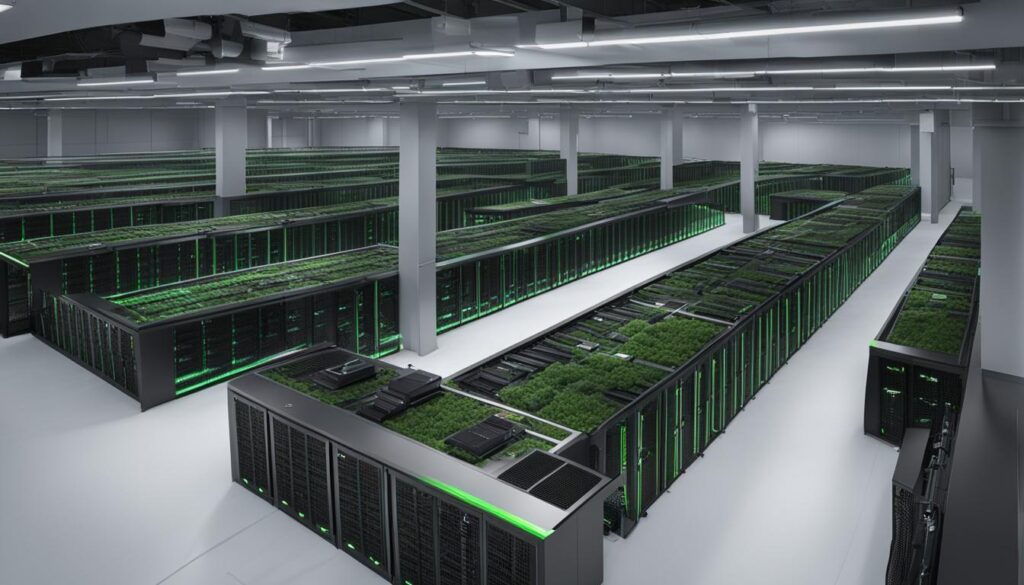
Optimizing the layout of your data center can have a significant impact on energy efficiency. By rearranging assets based on their energy consumption and temperature requirements, you can improve airflow and take full advantage of HVAC vent placement.
Understanding the location of intake and outtake vents allows for proper asset placement, ensuring efficient cooling and reducing energy consumption. Consider organizing your data center in a way that minimizes the distance between high-energy assets and cooling vents, optimizing the airflow and temperature distribution. This strategic arrangement can help prevent hotspots and ensure uniform cooling throughout the facility.
To further optimize energy efficiency, you may also consider the use of supplemental cooling units in hotter zones. By targeting specific areas with additional cooling, you can reduce overall electricity costs and ease the load on your HVAC system.
Benefits of rearranging your data center
- Improved airflow: Proper asset placement allows for better airflow management, reducing the risk of overheating and promoting efficient cooling.
- Reduced energy consumption: Optimized airflow and cooling result in lower energy demands, leading to reduced electricity costs.
- Enhanced equipment performance: By maintaining the ideal operating temperature, you can prolong the lifespan of your data center equipment and improve overall performance.
| Asset Placement | Energy Consumption | HVAC Optimization |
|---|---|---|
| Strategic arrangement | Reduces energy consumption | Optimizes airflow and temperature distribution |
| Proximity to cooling vents | Ensures efficient cooling | Prevents hotspots |
| Supplemental cooling units | Reduces electricity costs | Eases load on HVAC system |
Replace older assets with more efficient ones
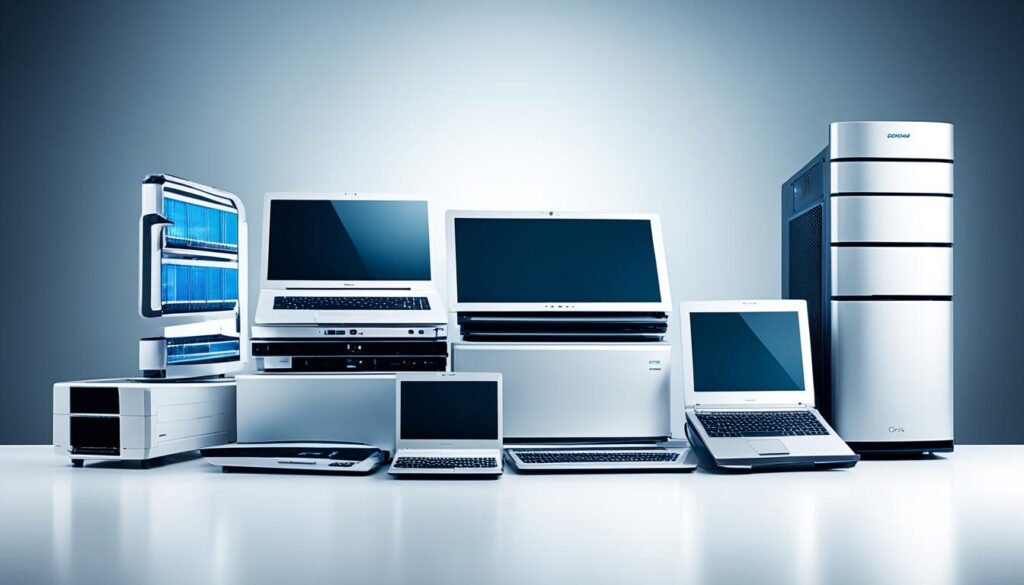
Legacy technology in data centers can be a major drain on resources, consuming excessive power, generating excess heat, and having lower physical tolerances compared to newer technologies. To improve energy efficiency and reduce environmental impact, it’s important to replace these outdated assets with more energy-efficient replacements.
Start earning effortlessly! Claim your $3 bonus and monetize your unused data with Honeygain. It’s simple, secure, and smart.
Claim Nowand watch your balance grow! 🍯💸
Consider upgrading your servers, switches, racks, and HVAC technologies to models that are designed with energy efficiency in mind. By doing so, you can significantly reduce energy consumption and lower your data center’s carbon footprint.
To further optimize energy efficiency, explore server virtualization options. Virtualization technology allows you to run multiple virtual servers on a single physical machine, maximizing resource utilization and minimizing energy consumption.
Replacing physical servers with virtual ones or moving resources to the cloud can also help reduce energy usage and improve overall efficiency. As older equipment reaches its end-of-life, make sure to replace it with more energy-efficient options to ensure your data center stays environmentally friendly.
“By replacing legacy technology with energy-efficient replacements, businesses can significantly reduce their environmental footprint and lower operational costs,” says Peter Johnson, a leading IT consultant.
https://softspotlight.com/guide-to-tiktok-marketing/
Invest in smart facilities management tools
When it comes to optimizing energy efficiency and reducing costs in your data center, investing in smart facilities management tools is a game-changer. These advanced tools leverage cutting-edge technologies like AI-powered monitoring to analyze energy data and provide valuable insights for optimizing power consumption and asset usage.
One of the key advantages of these tools is their ability to autonomously manage HVAC functions. With AI-powered monitoring, you can continuously monitor temperature data and make real-time adjustments to achieve optimal energy efficiency. By ensuring that your data center is always operating at the right temperature, you can significantly reduce energy consumption and lower costs.
Furthermore, smart facilities management tools can analyze energy data and create power usage effectiveness forecasting models. This allows you to have a clear understanding of your energy consumption patterns and make data-driven decisions to improve efficiency further. By identifying areas of potential waste or inefficiency, you can implement targeted strategies to optimize your energy usage.
Investing in IT service management tools can also improve other aspects of your data center’s operations. These tools streamline and automate various IT service management processes, ensuring smooth and efficient operations. By centralizing and integrating IT service management functions, you can enhance productivity and deliver better service to your organization.
By harnessing the power of AI-powered monitoring, data analysis, and IT service management, smart facilities management tools empower you to take control of your data center’s energy consumption and optimize its performance. The result is not only reduced energy costs but also a more environmentally sustainable and efficient operation.
Investigate green energy technologies
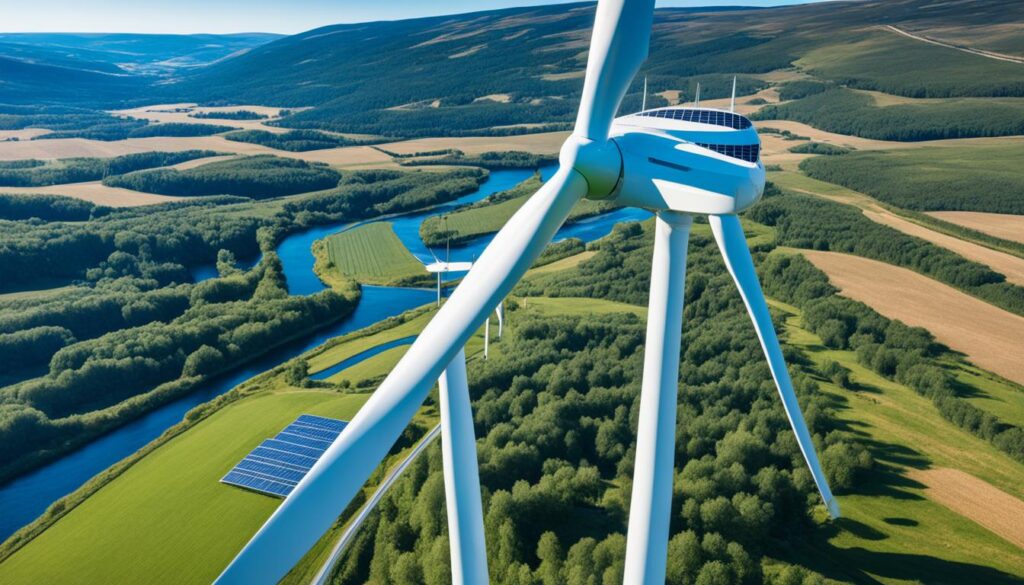
When it comes to reducing your data center’s carbon footprint, exploring alternative energy sources is key. Green energy technologies, such as renewable energy, geothermal cooling, wind power, and hydroelectric power, are gaining popularity among organizations seeking sustainable IT solutions.
By harnessing renewable energy options, you can significantly decrease your reliance on conventional power sources and contribute to a greener, more eco-friendly IT infrastructure. Take the time to research and understand the green energy options available in your region to make an informed decision that aligns with your sustainability goals.
Implementing renewable energy sources in your data center not only helps lower power consumption but also reduces your environmental impact. Let’s take a closer look at how different green energy technologies can benefit your data center:
Geothermal Cooling
Geothermal cooling harnesses the natural heat stored underground and uses it to cool your data center. The process involves circulating fluids through underground pipes, leveraging the earth’s consistent temperature to maintain optimal cooling levels. This method is highly efficient and significantly reduces energy consumption, making it a sustainable cooling solution for data centers.
Wind Power
Wind power involves utilizing wind turbines to generate electricity. These turbines convert kinetic energy from the wind into usable electrical power. By incorporating wind power into your data center’s energy mix, you can tap into a renewable and abundant energy source, reducing your reliance on fossil fuels and lowering greenhouse gas emissions.
Hydroelectric Power
Hydroelectric power utilizes the energy from flowing or falling water to generate electricity. By utilizing hydroelectric power sources, such as rivers or waterfalls, you can access a clean and renewable energy option. Hydroelectric power is not only environmentally friendly but also reliable and capable of generating a stable power supply for your data center.
Investigating and adopting green energy technologies can significantly contribute to a more sustainable future while promoting efficient power consumption in your data center. Embracing renewable energy sources aligns with your commitment to reducing your environmental impact and establishing a greener IT infrastructure.
| Green Energy Technology | Benefits |
|---|---|
| Geothermal Cooling | Highly efficient cooling solution Reduces energy consumption Utilizes natural heat from the earth |
| Wind Power | Utilizes renewable wind energy Reduces reliance on fossil fuels Low greenhouse gas emissions |
| Hydroelectric Power | Clean and renewable energy source Reliable and stable power supply Lower environmental impact |
Conclusion
Implementing green computing practices in your IT infrastructure is essential for reducing the environmental impact of data centers and achieving sustainability goals. By adopting these practices, you can significantly improve energy efficiency and reduce your carbon footprint, while also experiencing cost savings and contributing to overall business sustainability.
Tracking your energy usage and implementing strategies like right-sizing servers, optimizing temperature, and rearranging your data center layout can help you identify areas of improvement and enhance energy efficiency. Upgrading to more energy-efficient assets and investing in smart facilities management tools can further optimize power consumption and reduce environmental impact.
In addition, considering alternative energy sources, such as geothermal cooling, wind power, or hydroelectric power, can help significantly reduce your reliance on conventional energy sources and contribute to a greener IT infrastructure. Partnering with green IT vendors and embracing the shift towards green computing practices can pave the way for a brighter and more sustainable future.

